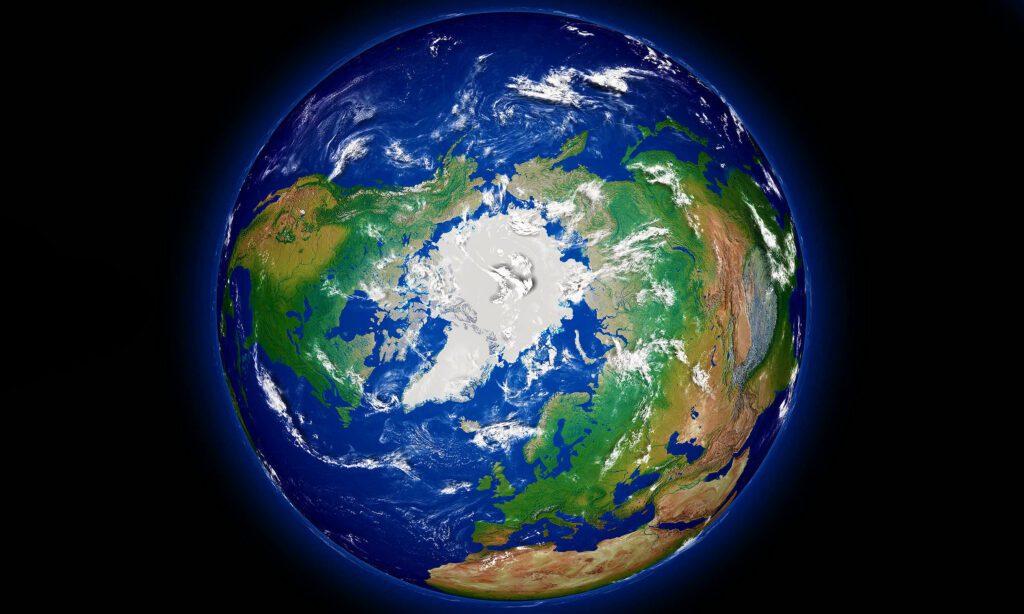Growing up, we all learned about Earth’s seven continents: Africa, Antarctica, Asia, Australia, Europe, North America, and South America. These geographical boundaries have been taught as an integral part of our education system for ages.
However, new research suggests that this long-held belief may not be correct. According to Dr. Jordan Phethean and his dedicated team, we actually have only six continents.
This bold claim comes from a detailed study that looks into the geological processes behind the breakup of the European and North American continents, exploring how these landmasses have evolved over millions of years.
New perspective on continental shift
Dr. Jordan Phethean, the lead author of the study from the University of Derby, highlights a significant shift in our understanding of tectonic plates.
“The discovery indicates that the North America and Eurasian tectonic plates have not yet actually broken apart, as is traditionally thought to have happened 52 million years ago,” explains Dr. Phethean.
Instead, these plates are still stretching and in the process of breaking apart. This ongoing process changes how we perceive the formation and separation of Earth’s continents.
Iceland’s connection to Earth’s continents
The study focuses on Iceland, a volcanic island nestled between the Greenland Sea and the North Atlantic Ocean. Traditionally, it has been believed that Iceland emerged around 60 million years ago as a result of the mid-Atlantic ridge.
This tectonic boundary, formed by the North American and Eurasian plates, is thought to have facilitated the rise of a hot mantle plume that ultimately created the island.
However, recent findings challenge this long-standing theory. Researchers, through an extensive analysis of tectonic movements across the African continent, have proposed a captivating idea.
They claim that Iceland, along with the Greenland Iceland Faroes Ridge (GIFR), contains geological fragments from both European and North American tectonic plates.
This discovery suggests that these regions are not merely isolated landforms; they are interconnected components of a larger continental structure. To describe this newly identified geological feature, the team has coined the term ‘Rifted Oceanic Magmatic Plateau’ (ROMP).
This term emphasizes the unique composition of the area and highlights the significant implications for our understanding of plate tectonics and the geological history of the North Atlantic region.
The ROMP: Earth’s hidden treasure
Dr. Phethean draws an intriguing parallel, describing the ROMP as the Earth Science equivalent of finding the Lost City of Atlantis.
“Fragments of lost continent submerged beneath the sea and kilometers of thin lava flows,” he explains. By studying the volcanic Afra region in Africa and comparing it to Iceland, the team found striking similarities in their evolution.
If Dr. Phethean’s team is correct, the European and North American continents are still in the process of breaking apart. This means that, scientifically speaking, North America and Europe might be considered a single continent of Earth rather than two distinct continents.
While this idea is controversial, it is grounded in meticulous research.
“It is controversial to suggest that the GIFR contains a large amount of continental crust within it, and that the European and North American tectonic plates have perhaps not yet officially broken up,” admits Dr. Phethean. Yet, their findings support this bold hypothesis.
The research is still in its conceptual phase. The team plans to explore volcanic rocks in Iceland for more concrete evidence of ancient continental crust.
They are also undertaking plate tectonic modeling and computer simulations to better understand the ROMP formation.
Discovery of Earth’s proto-microcontinent
This research follows Dr. Phethean’s earlier discovery of a new ‘proto-microcontinent’ between Canada and Greenland.
Believed to have formed 60 million years ago, this proto-microcontinent is about the size of England, sitting below the Davis Strait.
“Rifting and microcontinent formation are ongoing phenomena,” says Dr. Phethean.
Understanding these processes helps scientists learn more about how plate tectonics operate. This knowledge can predict where useful resources might be found and how Earth might look millions of years into the future.
Implications for Earth Science
Dr. Phethean’s work offers new insights into the dynamic nature of our planet. The discovery of the proto-microcontinent and the ROMP has significant implications.
It helps us understand the past, present, and future of Earth’s geological activity. It also sheds light on how plate tectonics might have influenced the development of life.
The next steps for Dr. Phethean and his team involve more in-depth studies and advanced modeling techniques. By continuing their research, they aim to provide more evidence and refine our understanding of Earth’s geological history.
Earth’s continents are forever changing
In summary, Dr. Phethean’s research offers a transformative perspective on our understanding of Earth’s continents.
By revealing ongoing tectonic shifts and the presence of hidden continental fragments, his findings challenge longstanding assumptions and pave the way for new explorations.
This study emphasizes the dynamic nature of our planet and the constant evolution of its geological framework.
As we explore these revelations further, we not only revise our scientific literature but also broaden our comprehension of the Earth we inhabit.
Dr. Phethean and his team’s work serves as a reminder of the countless hidden mysteries our world holds, waiting to be discovered.
Their continued efforts are set to illuminate both Earth’s history and its future, deepening our appreciation for its ever-evolving character.
How might these insights influence our approach to understanding geological processes and their implications for our environment? Stay tuned.
The full study was published in the journal Gondwana Research.
—–
Like what you read? Subscribe to our newsletter for engaging articles, exclusive content, and the latest updates.
Check us out on EarthSnap, a free app brought to you by Eric Ralls and Earth.com.
—–
Source link : http://www.bing.com/news/apiclick.aspx?ref=FexRss&aid=&tid=66b13c5bf1d74d1996df865f4c9a7d43&url=https%3A%2F%2Fwww.earth.com%2Fnews%2Fclaim-earth-has-six-continents-not-seven-north-america-europe-connected%2F&c=11749120944502456649&mkt=en-us
Author :
Publish date : 2024-08-05 09:50:00
Copyright for syndicated content belongs to the linked Source.
